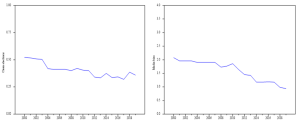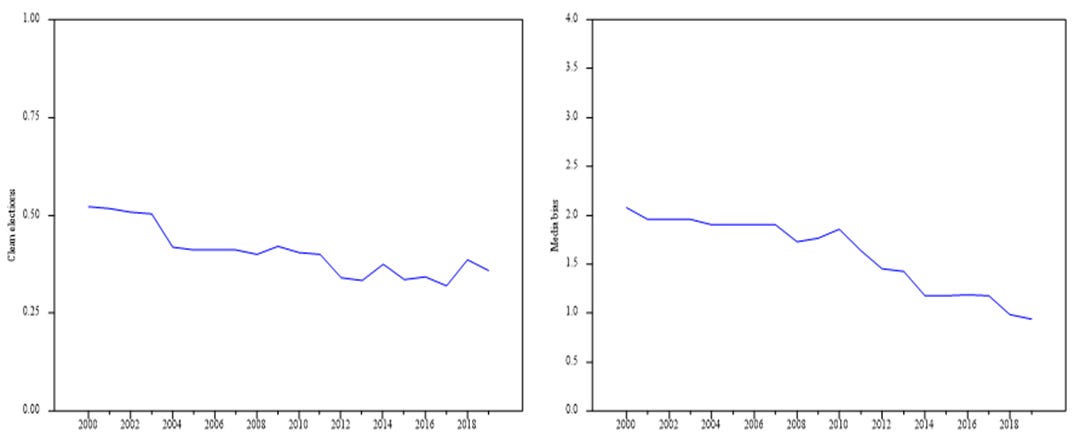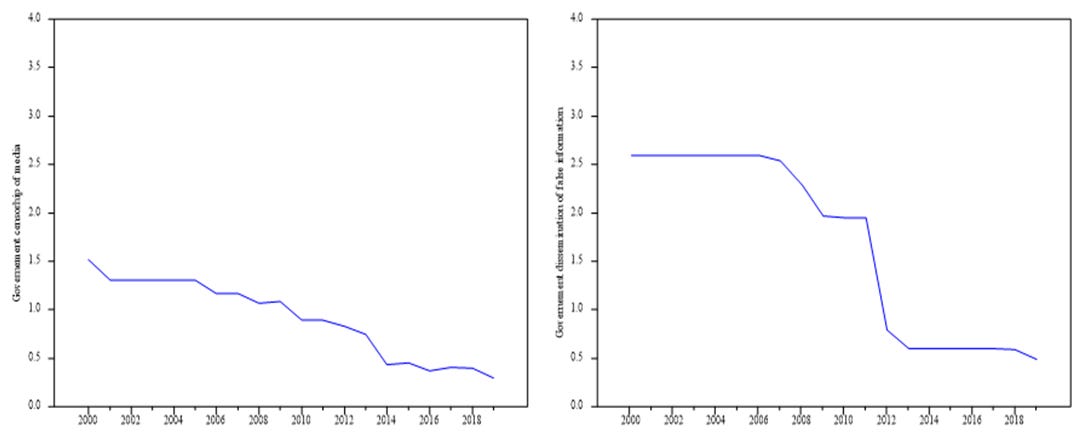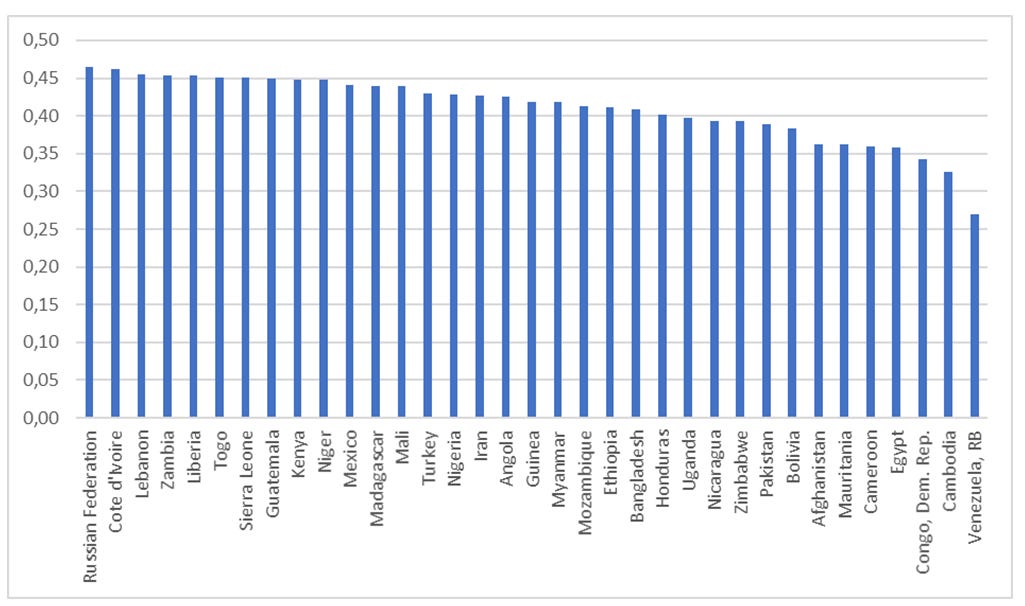Putin’s carnage on Russian democracy
Spoiler: It is done. Or rather it is no more, just like the Norwegian Blue. The first presidential election that Putin won, was deemed as democratic by the OSSE, although with some remarks. Since then, every election, parliamentary or presidential have marred with election fraud, biased media coverage, and barriers preventing political competition.
And then he began his carnage on democracy. He killed the free press, murdered journalists and political opponents, abolished the judiciary’s independence, hunted civil rights activists, manipulated the elections, and fed the Russian population with lies through the media.
The new “constitution” not only makes Russia a full-blown dictatorship. It also written to justify territorial claims on countries that were part of the Soviet Union.
When Putin came to power, there was still hope for an aspiring democracy in Russia…
In its final report of the 2000 Russian presidential election, the OSCE states that the election process was conducted in accordance with internationally recognised democratic standards. According to the authors of the report, the election demonstrated Russia’s continuing commitment to strengthen its democratic electoral institutions.
...but Putin soon put an end to that
Three parliamentary and presidential elections later, the OSCE final report of the presidential election in 2018 finds:
That during the election, there were continued pressure on critical voices;
Restrictions on fundamental freedoms of assembly, association and expression as well as on candidate restriction which resulted in lack of genuine political competition;
That the media coverage was biased in favour of Putin;
That there were shortcomings related to voter secrecy and transparency of counting; That the legal framework for the election contained restrictions on voter and candidate rights, and limitations on constitutionally guaranteed political rights and fundamental freedoms.
The fraud in the “referendum” was as staggering as the media coverage was biased
It is therefore no surprise that Putin’s “referendum” aka the all-Russian vote was illegal, even unconstitutional. Just like the other elections since 2000, the fraud was massive or even worse as Sergei Shpilkin’s. See his facebook page here.
And as usual, it was done in a very clumsy way. When this family were about to cast their votes, they were informed that they already had voted. And the almost identical results in different polling stations in Kazan are more evidence of the fraud. According to the protocols, all polling stations presented a 65% participation and 77% votes in approval. Only decimals differed between the different stations .
And, there was of course not any free debate about the “referendum” as opponents were not given access to media and couldn’t run any campaigns in media of any kind. There were of course no restrictions in the media for the “Yes” side.
But as mentioned above, this is nothing new. The fraudulent elections and media bias is the characteristic for Russia since Putin came to power, c.f. Figure 1.
Figure 1. Cleanness and fairness of elections (left panel) and media bias (right panel) in Russia during Putin.
Source: V-Dem https://www.v-dem.net/en/Note:Clean Elections Index. The indicator ranges from 0 to 1, where 0 indicates absence of registration fraud, systematic irregularities, government intimidation of the opposition, vote buying, and election violence. Media bias. The indicator ranges from 0 to 4, where 0 indicates a situation where media only cover the official party or candidate and 4 indicates a situation where all parties or candidates are covered impartially.
Which is to be expected as the new constitution was on sale in bookstores already before the last votes in the “referendum” had been “counted”.
And to prevent the Russian people from getting unbiased information, the Kremlin censored the media and spread false information as the tradition in Russia since Putin goes.
The “No” campaign site was blocked by the government authorities . Their possibilities to spread information and campaign against the “Yes” side was severely restricted as the Russia government regularly monitors and censors both the media and the Internet. But there is no limit to the governments dissemination of false information targeting the Russian people, c.f. Figure 2.
Figure 2. Russian Government censorship of media (left panel) and dissemination of false information targeting Russians (right panel) during Putin.
Source: V-Dem https://www.v-dem.net/en/ Note: Government censorship effort. The indicator ranges from 0 to 4, where 0 indicates that censorship efforts are direct and routinely and 4 indicates that no censorship is carried out. Government dissemination of false information domestic. The indicator ranges from 0 to 4, where 0 indicates that the false information is disseminated by the government extremely often and 4 never.
Many Russians were not sure whether they voted for Putin to remain president, higher wages, higher pensions, or lottery prices in the illegal “all-Russian vote”
The “referendum” was not only on a new “constitution”, it was also a about higher wages, higher pensions, better healthcare and other goodies to make people forget that the new constitution will be unconstitutional since the whole procedure foregoing the “referendum” is illegal according to the existing constitution which is explained here, here, here, here and in many more places.
The result is more power to Putin and less freedom to the people
Even less freedom should I perhaps write since Putin has systematically violated civil rights since he became president which is shown here, and here.
In civilised countries, a constitution guarantees the citizens civil rights, defines the limits and restrictions of the executive powers, lines out the separation of powers between the different institutions such as the president, the parliament and the supreme court whatever name that is given. The new Russian “constitution” is a violation of these principles and what was left of Rule of Law since Putin began to destroy Russia, is now gone. Researchers in The World Justice Project analyse a large number of countries every year with respect to the Rule of Law. In this year’s report, 128 countries were assessed and ranked. Russia did not come out particularly good in this assessment, c.f. Figure 3.
Figure 3. Rule of law index for 128 countries in 2019.
Source: World Justice Project https://worldjusticeproject.org/our-work/wjp-rule-law-index Note: See https://worldjusticeproject.org/about-us/overview/what-rule-law for a description of how the Rule of Law Index is constructed.
The higher the value of the index, the more is the country characterised by Rule of Law. The Scandinavian countries, Finland and the Netherlands occupy the five first rankings.
It is difficult to distinguish individual countries in Figure 3. But Russia is one of the two bars filled with red. And it is not the left one which is a country with “better” Rule of Law than Russia, that is China. But let’s give the Kremlin a break and show which countries that are deemed to be even worse than Russia. It is also a consolation for Russians that it is not as bad as in Venezuela, c.f. Figure 4.
Figure 4. Rule of law index for the worst 35 countries in 2019.
Source: See below Figure 3.
The changes to the constitution have been analysed and described by many analysts. Putin gave God a prominent place the “constitution” but more important is the violation of civil rights as only heterosexual couples are allowed to marry. The constitution is not only a threat to Russia citizens.
The new “constitution” can be used to justify attacks to neighbouring countries were former Soviet republics. According to new “constitution” Russian law precedes international law, Russia is declared as the successor of the Soviet Union, safeguards the memory of ancestors who passed on to Russia the continuity of the development of the Russian state. Russia is given the status of a state-forming ethnic group through the use of the Russian language. Also, a recent amendment that simplifies granting of Russian citizenship within the borders of the former Soviet Union and makes it possible to hold dual citizenship.
Putin, who thinks the collapse of the Soviet Union was a bigger geopolitical catastrophe than WWI where around 27 million Soviet citizens lost their lives, has recently become even more aggressive towards the Baltic countries in a way that would have made Stalin proud.
”In autumn 1939, the Soviet Union, pursuing its strategic military and defensive goals, started the process of the incorporation of Latvia, Lithuania and Estonia. Their accession to the USSR was implemented on a contractual basis, with the consent of the elected authorities. This was in line with international and state law of that time. Besides, in October 1939, the city of Vilna and the surrounding area, which had previously been part of Poland, were returned to Lithuania. The Baltic republics within the USSR preserved their government bodies, language, and had representation in the higher state structures of the Soviet Union.”
And he’s made sure that he can stay in power to 2036. He has plenty of time to make plans to conquer the Baltics.







